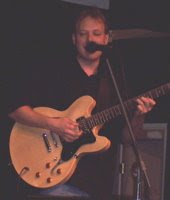According to David Considine (1995), media literacy is an expanded information and communication skill that is responsive to the changing nature of information in our society. People are no longer using books as the main source to gather information, but they are turning to video through television or a multiple of mediums through the internet. The literacy part of media literacy still hold traditional values though. It includes the ability to comprehend, create, design and produce, or in traditional terms, read and write.
Henry Jerkins (2008) defines the new literacy skills as play, performance, simulation, appropriation, multitasking, distributed cognition, collective intelligence, judgement, transmedia navigation, networking and negotiation. These skills will help prepare students to become full participants in our society. Most of these skills can also be tied into traditional literacy skills we must now evolve our thoughts to include the technology and media available to us and prepare students to think and collaborate in a world culture. We must also prepare them to work with tools that do not yet exist. Considine has a consolidated version of these skills he lists as access, analyze, evaluate and communicate.
With the emergence of Web 2.0 tools and the amount of information available to us, it is important to analyze and evaluate the information we have access to. In the Living Smart #407 video,http://video.google.com/videoplay?docid=-1270957423413378776 Garth Jowett discusses how images and media sources were designed as propaganda to sell ideas or products. He is also shown asking students if there are facts missing in an advertisement, is it a lie? Having various points of view and being able to fill in the gaps through critical thinking skills will help fill in the missing information we did not have access to in early media. Jewett discusses how we need to learn to analyze messages and detect the propaganda, censorships and bias presented.
These new literacy skills really are not new, it is just now at the forefront of our teaching process based on technology that has developed. We can now use a variety of tools to communicate, comprehend, create, design and produce in any medium. I do not see these as new skills, but rather as evolution of skills.
References:
Considine, D. (1995) An introduction to media literacy. Teledum, The Journal of Media Literacy, 41(2) Retrieved August 14, 2009 from http://www.ced.appstate.edu/departments/ci/programs/edmedia/medialit/article.html
Jenkins, H., (2008) Confronting the Challenges of Participatory Culture: Media Education for the 21st Century. http://digitallearning.macfound.org/atf/cf/%7B7E45C7E0-A3E0-4B89-AC9C-E807E1B0AE4E%7D/JENKINS_WHITE_PAPER.PDF

Indeed the skills were needed and used when newspaper was the chief news dissemination and then radio, but the need to sort the information was there. I tried to find a historical document stating such idea without any luck.
ReplyDeleteGood blog, Bob.